Water & Irrigation
Most vegetables are made up of 70-95% water, much of which is used as a transport medium to move nutrients around the plant. Insufficient water prevents the plants from circulating the nutrients they need to grow. Adequate moisture is necessary for good crop establishment, good growth, and good yields. Keeping plants well watered is crucial for a successful crop. The type of soil in a garden determines the availability of water to the roots of plants.
Soil is made up of different sized substances including, minerals (sand, silt, clay, rocks), organic matter (living and dead organisms), air, and water. Most soils contain three particle sizes—sand, silt, clay—in different combinations.
Clay soils are denser and tend to hold water longer and need less watering.Sandy soils allow water to travel down through it much more quickly than in clay soil and require more watering.An ideal soild composition for growing vegetables is described in the soil section.
An irrigation system can supply water to raised beds and to containers where it is needed, in the right quantities and at the best times.
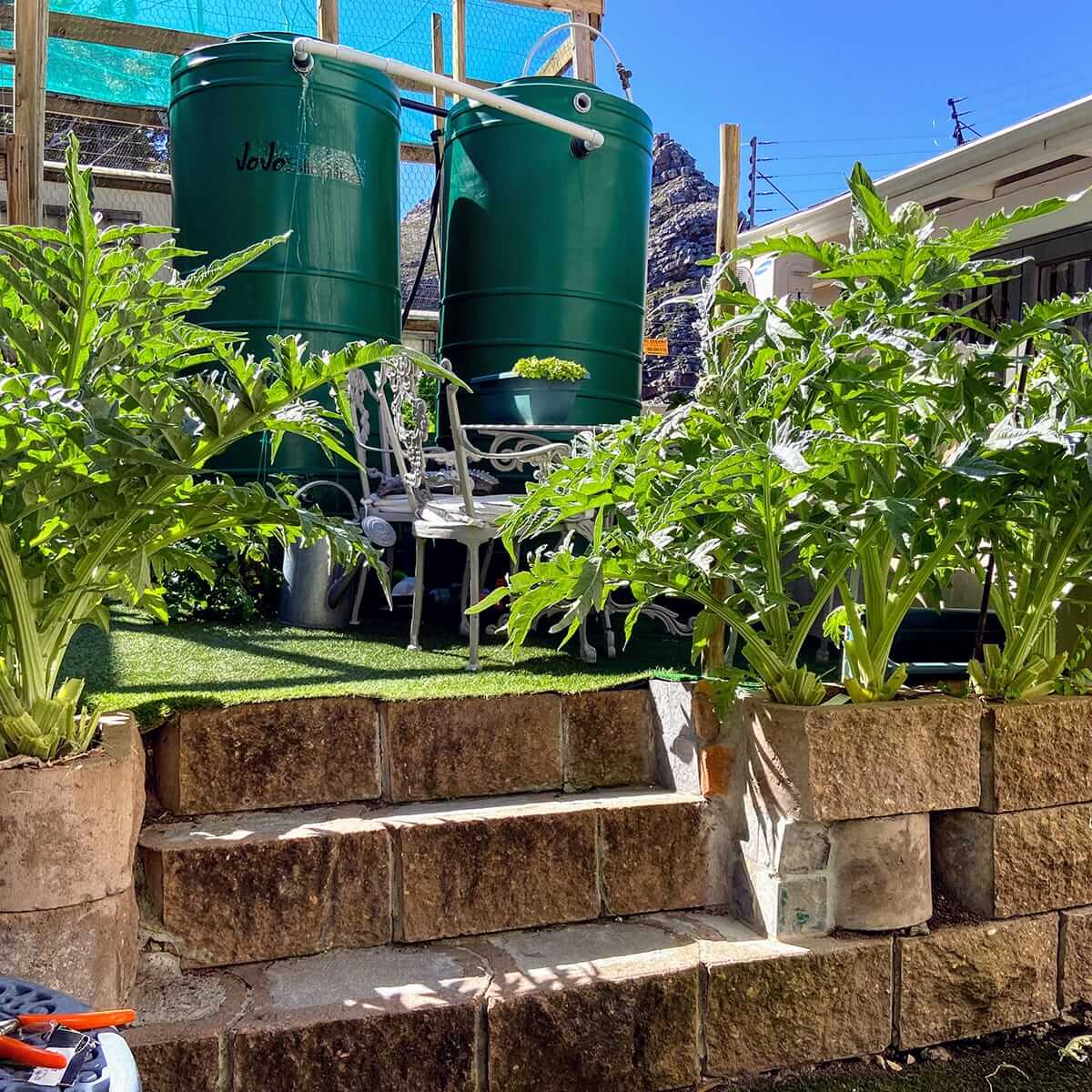
The tanks in the above picture stores and cleans water from my borehole. Municipal water works just as well. My small gardèn's irrigation system consists of pipes, connectors, sprinklers, soakers and drippers and supplies water from a borehole at municipal pressure.
Sprinklers
A sprinkler is effective for watering vegetables. Customizable systems with sturdy built-in ground spikes are readily available from most gardening suppliers. These can produce 180° water half-circles around two or three feet across. 360° sprinklers circles up to two to there feet in diameter can also be used. They can be simply arranged to supply water to plants using PVC piping cut to appropriate lengths.
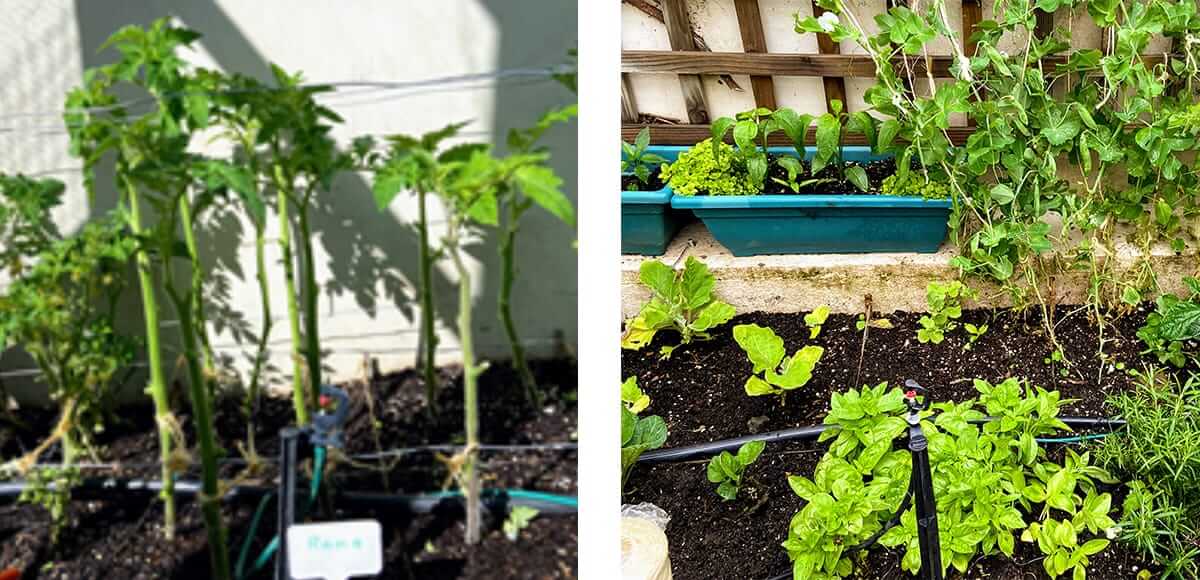
Constantly wetting the foliage of vegetable plants can encourage disease problems. However, an automated system supplying water for five minutes three times per day allows the foliage to dry during the day and before nightfall, reducing the risk of disease and water loss to evaporation.
Soaker-Hose Irrigation
A soaker-hose irrigation system consists of a rubber hose perforated with tiny pores that leak water. You can lay the hose between rows or curve it around plants.
With a soaker hose, water leaks out of the hose and onto the soil, leaving foliage dry and reducing evaporation. Using a soaker-hose system is more accessible than using a drip irrigation system because it involves fewer parts and no nozzles. I used soaker hoses to grow the herbs in the containers below:
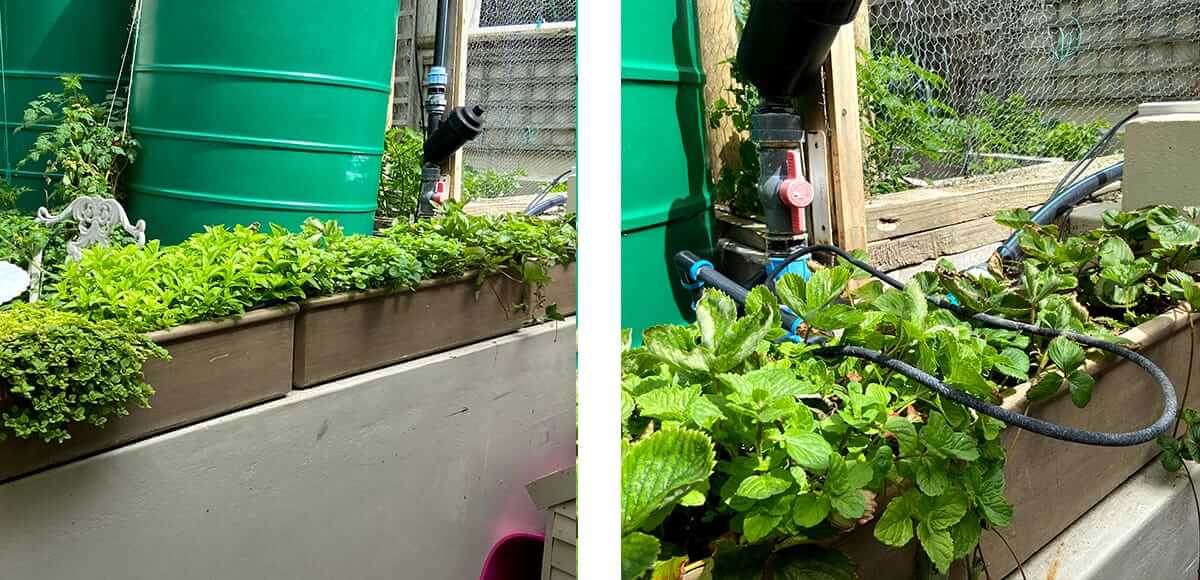
Drip irrigation
A drip irrigation system provides water slowly through holes or emitters. Many different drip irrigation systems are available. They can consist of a single pipe with flexible lines or a series of pipes. These pipes connected to a water supply and a filter are weaved along rows of plants, Pipes are joined through couplers, angles, and three-way connectors to which both emitters and sprinklers are inserted, ensuring that the water flows directly to vegetables' roots. Drip irrigation is the most effective and efficient way to water vegetables because water drips right to its roots, and little water is wasted.

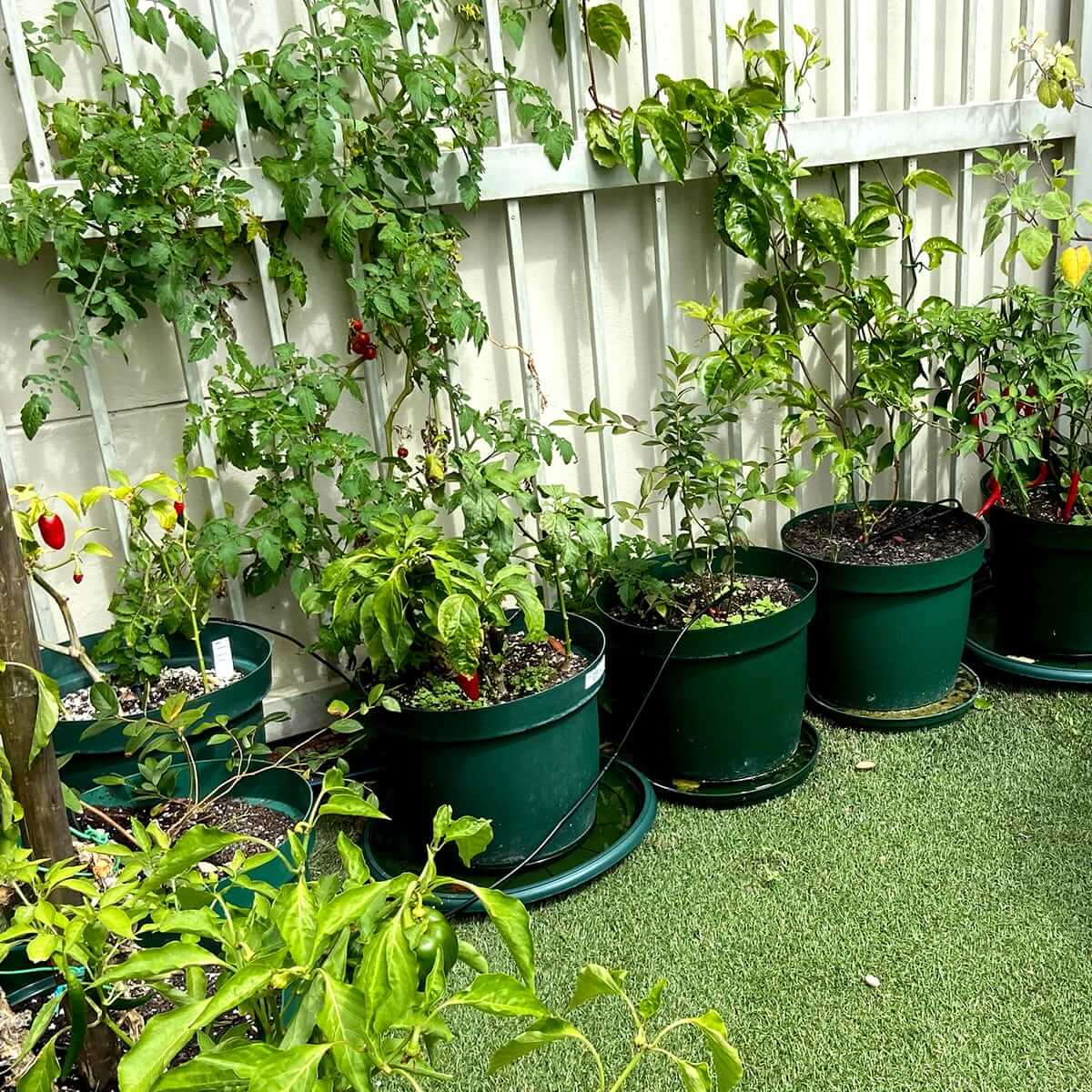
An optional timer will turn your irrigation system from good to great. Be sure to choose a programmable timer that allows for several shorter cycles per day. The components of an irrigation system are relatively inexpensive and can be easily assembled according to needs by most home gardeners. Adequate information on how to build an irrigation system is available in the literature.
The benefits far exceed the relatively small investment required to set up the system in a small home garden for a serious gardener.
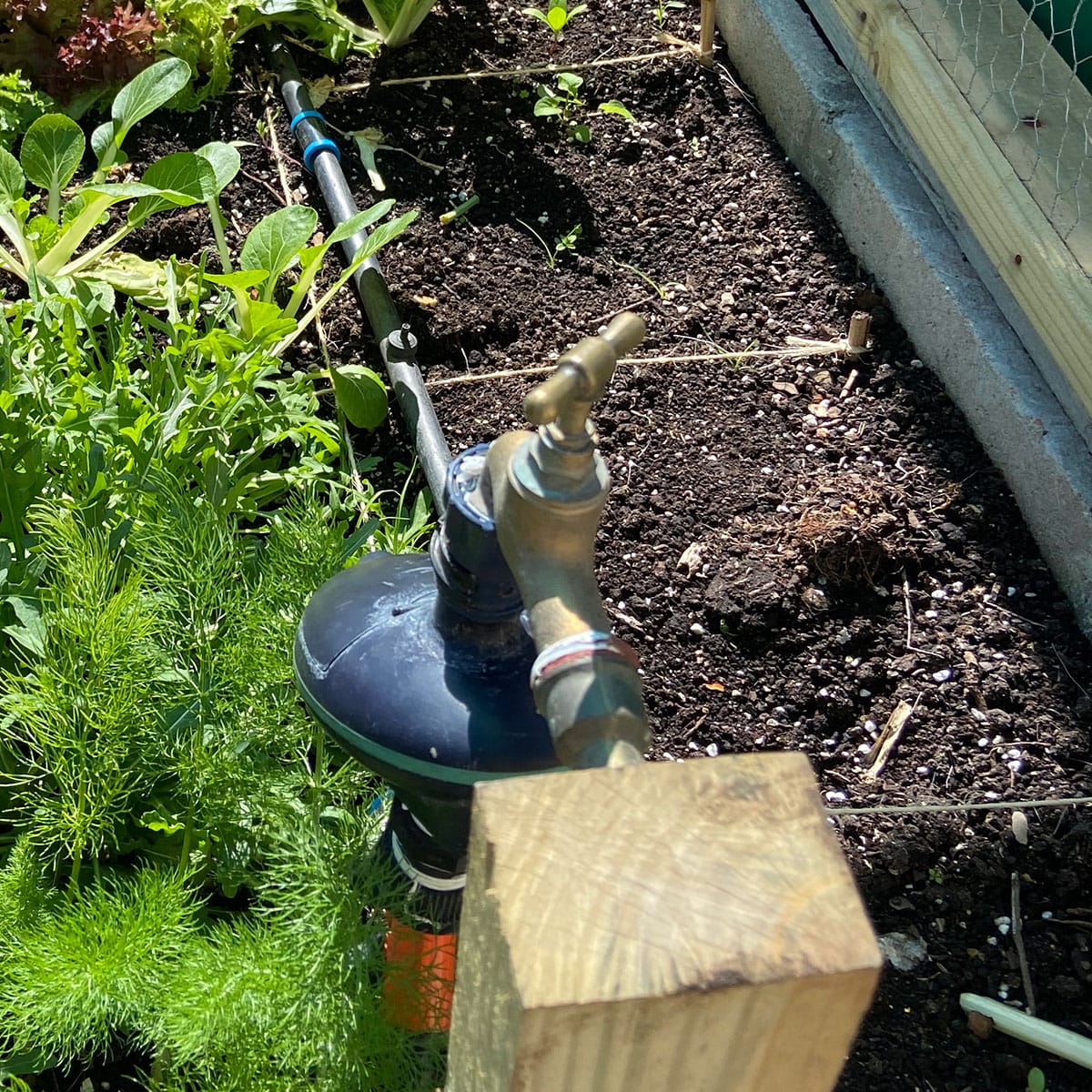
Providing water at normal municipal pressure through my automated irrigation system for five minutes three times a day (morning, noon and just before dusk), I have found that it produces an adequate water supply to grow healthy, vigorous plants.
The amount of water per week is easy to calculate by measuring the amount of water flowing from your tap flowing into a bucket per minute. Similarly, the square meterage of a small garden is also easy to calculate. From that the number of litres of water per square meter can be calculated. As a rule of thumb, most vegetable crops require 10 to 15 mm per week for the first third to half of the growing season and about 25 mm per week after that. (1 mm water per 1 m2 soil surface = 1 litre.)
Plant condition, e.g. drooping or wilting leaves, may indicate that earlier or greater water application is needed. I have rarely had to adjust my watering rate. In rainy weather, the system can be turned off from my cellphone if necessary especially in exceptionally wet weather.